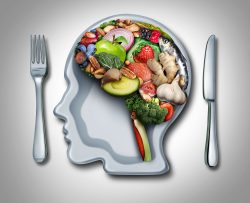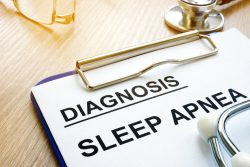How Trigonelline in Coffee Helps Maintain Muscle Vitality
 Recent studies have highlighted the promising health advantages of trigonelline, a naturally occurring molecule present in coffee, fenugreek, and within humans. This breakthrough is crucial in advancing muscle wellness and performance, particularly in addressing the challenge of sarcopenia. It was found by a global team of researchers that individuals experiencing sarcopenia in their advanced years show reduced concentrations of trigonelline.
Recent studies have highlighted the promising health advantages of trigonelline, a naturally occurring molecule present in coffee, fenugreek, and within humans. This breakthrough is crucial in advancing muscle wellness and performance, particularly in addressing the challenge of sarcopenia. It was found by a global team of researchers that individuals experiencing sarcopenia in their advanced years show reduced concentrations of trigonelline.
Sarcopenia involves the progressive loss of muscle strength stemming from cellular aging processes, resulting in notable drops in muscle size, power, and consequently, diminishing autonomy in daily activities. A pivotal aspect of sarcopenia’s development is the dwindling levels of the cellular cofactor NAD+ alongside decreased mitochondrial energy output, essential for powering cellular activities.
In early-stage research models, the addition of trigonelline was observed to boost NAD+ concentrations as well as amplify mitochondrial functionality, thereby contributing to the maintenance of muscle capabilities as one ages. This insight forms a component of a wider exploration into the underlying processes of sarcopenia in humans, extending upon prior research that revealed new facets of the disorder.
The study emphasizes the significance of NAD+ and its precursors, including the amino acid L-tryptophan (L-Trp) and different types of vitamin B3 in preserving muscle wellness.
These results broaden our knowledge of NAD+ metabolism by identifying trigonelline as a new precursor to NAD+, enhancing the prospects for creating treatments that utilize NAD+-generating vitamins for promoting healthy aging and tackling age-related illnesses. The discovery that a natural food-derived molecule interacts with cellular signs of aging through joint research efforts was particularly thrilling. Trigonelline’s positive effects on cellular metabolism and muscle well-being in the aging process pave the way for promising practical uses.
The research highlights the importance of diet and exercise in maintaining muscle vitality into older age. Looking ahead, the potential of these discoveries is set to transform our methods of preserving muscle robustness and autonomy, providing optimism for a future where aging is synonymous with vitality instead of deterioration.
To view the original scientific study click below:
Trigonelline is an NAD+ precursor that improves muscle function during ageing and is reduced in human sarcopenia



 For those facing challenges with sleep quality, conventional advice often revolves around evening habits. However, emerging research suggests a more impactful approach rooted in daytime physical activity. According to a new study, altering one’s daily routine to include more exercise can play a vital role in improving sleep at night.
For those facing challenges with sleep quality, conventional advice often revolves around evening habits. However, emerging research suggests a more impactful approach rooted in daytime physical activity. According to a new study, altering one’s daily routine to include more exercise can play a vital role in improving sleep at night. The authors of a new study published in the esteemed BMJ journal highlight a significant gap in research on the health impacts of ultra-processed food. They point out that despite extensive discussion on the topic, there hasn’t been a thorough umbrella review that synthesizes and evaluates the collective findings of meta-analyses on this issue. To address this shortfall, they examined 45 meta-analyses, encompassing nearly 10 million participants, offering a comprehensive overview of the evidence on the health effects of ultra-processed food.
The authors of a new study published in the esteemed BMJ journal highlight a significant gap in research on the health impacts of ultra-processed food. They point out that despite extensive discussion on the topic, there hasn’t been a thorough umbrella review that synthesizes and evaluates the collective findings of meta-analyses on this issue. To address this shortfall, they examined 45 meta-analyses, encompassing nearly 10 million participants, offering a comprehensive overview of the evidence on the health effects of ultra-processed food. If you often find yourself browsing through the food aisles of grocery stores, meticulously reading labels and finding unfamiliar ingredients, then you may have come across a range of substances produced using nanotechnology. It is a groundbreaking field that has revolutionized the manufacturing of numerous everyday products.
If you often find yourself browsing through the food aisles of grocery stores, meticulously reading labels and finding unfamiliar ingredients, then you may have come across a range of substances produced using nanotechnology. It is a groundbreaking field that has revolutionized the manufacturing of numerous everyday products. The link between diet and overall well-being is well-acknowledged, yet understanding the exact impact of specific dietary choices on health can be challenging. The effects of food on brain function are particularly intricate, with ongoing research aimed at determining which diets best enhance cognitive abilities and brain health. In one investigation, researchers explored four different dietary patterns, concluding that a diverse and balanced diet offers the greatest benefits for brain health.
The link between diet and overall well-being is well-acknowledged, yet understanding the exact impact of specific dietary choices on health can be challenging. The effects of food on brain function are particularly intricate, with ongoing research aimed at determining which diets best enhance cognitive abilities and brain health. In one investigation, researchers explored four different dietary patterns, concluding that a diverse and balanced diet offers the greatest benefits for brain health. Recent findings from a study suggest that merely five minutes of boiling water could slash the concentration of microplastics in tap water by as much as 90%. Boiling tap water does more than just neutralize potential pathogens; it’s also effective in breaking down harmful pollutants like microplastics and chemicals, thereby enhancing the safety of your drinking water.
Recent findings from a study suggest that merely five minutes of boiling water could slash the concentration of microplastics in tap water by as much as 90%. Boiling tap water does more than just neutralize potential pathogens; it’s also effective in breaking down harmful pollutants like microplastics and chemicals, thereby enhancing the safety of your drinking water. A recent study has found a significant connection between the overconsumption of sweetened beverages and an increased likelihood of developing atrial fibrillation (AF), an irregular heartbeat condition. This condition can lead to serious complications, including blood clots, heart failure, stroke, and other cardiovascular problems. The research analyzed the genetic information and 24-hour dietary intake of over 200,000 participants, uncovering a clear link between sugary drink intake and the risk of atrial fibrillation.
A recent study has found a significant connection between the overconsumption of sweetened beverages and an increased likelihood of developing atrial fibrillation (AF), an irregular heartbeat condition. This condition can lead to serious complications, including blood clots, heart failure, stroke, and other cardiovascular problems. The research analyzed the genetic information and 24-hour dietary intake of over 200,000 participants, uncovering a clear link between sugary drink intake and the risk of atrial fibrillation. A recent study has delved into the correlation between obstructive sleep apnea (OSA) and the gut microbiome. Findings suggest that an imbalance in microbiota, termed dysbiosis, is associated with varying degrees of apnea severity, be it mild, moderate, or severe. The human body relies on its microbiota, comprising bacteria, fungi, and viruses that coexist symbiotically within and on the body, for multiple functions, most notably an efficient immune response.
A recent study has delved into the correlation between obstructive sleep apnea (OSA) and the gut microbiome. Findings suggest that an imbalance in microbiota, termed dysbiosis, is associated with varying degrees of apnea severity, be it mild, moderate, or severe. The human body relies on its microbiota, comprising bacteria, fungi, and viruses that coexist symbiotically within and on the body, for multiple functions, most notably an efficient immune response.  In the contemporary digital landscape, laptops and smartphones have emerged as indispensable companions for learners and workers alike. Yet, fresh insights from a Norwegian study suggest the importance of occasionally stepping away from our routine typing engagements. The research has delved into the disparities between handwriting and typing, with a focus on how each activity influences brain connectivity.
In the contemporary digital landscape, laptops and smartphones have emerged as indispensable companions for learners and workers alike. Yet, fresh insights from a Norwegian study suggest the importance of occasionally stepping away from our routine typing engagements. The research has delved into the disparities between handwriting and typing, with a focus on how each activity influences brain connectivity.  Before the advent of electricity, humans interacted with light in its purest forms, limited to sunlight, the glow of a fire, or the flicker of candlelight. These natural sources emit red and near-infrared light, serving as vital nutrients for both mind and body. However, the shift towards modern, indoor-centric lifestyles has resulted in a chronic deficiency of this natural light, depriving us of its beneficial biological effects.
Before the advent of electricity, humans interacted with light in its purest forms, limited to sunlight, the glow of a fire, or the flicker of candlelight. These natural sources emit red and near-infrared light, serving as vital nutrients for both mind and body. However, the shift towards modern, indoor-centric lifestyles has resulted in a chronic deficiency of this natural light, depriving us of its beneficial biological effects.